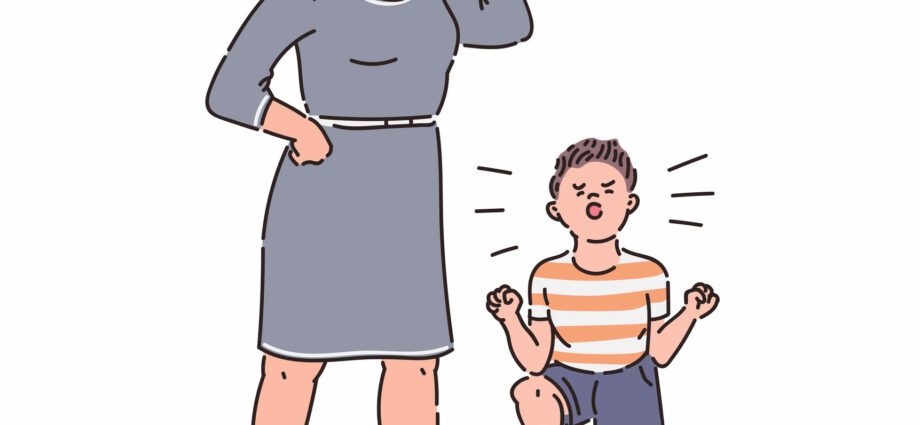Contents
Behavior disorder: causes, symptoms and treatments
Behavioral disturbances are manifested by an action or a reaction, which is not the correct attitude. They can be expressed in different ways (by excess or by default) and concern different spheres: food, mood, sex …
How are behavioral disorders defined?
Behavior can be defined as the way of acting or the way of behaving in everyday life. It is therefore a very general term which does not have a “scientific” definition. “Behavioral disorders are linked to social or cultural circumstances and attest to a psychic disorder,” explains Dr Marion Zami, addictologist. They can result in restlessness, aggression, obsessive-compulsive disorder (OCD), eating disorders (anorexia, bulimia, etc.), hyperactivity, addiction (alcohol, tobacco, other drugs, etc. play, work, sex, screens…) or phobias ”.
To be diagnosed as such, each of these anomalies must result in a clinically significant alteration in social, academic or professional functioning. These disorders can appear at any time of life, from childhood to adulthood.
The different types of behavioral disorders
Eating disorders
Eating behavior disorders (or TCA) are manifested by disturbed eating behavior. The two classic forms of these TCA are bulimia and anorexia.
Bulimia is characterized by a sudden, uncontrollable urge to eat very large amounts of food without being able to stop. “When people try to constantly maintain their weight, binge eating can be accompanied by vomiting. We will then speak of restrictive bulimia or vomiting bulimia, to be opposed to hyperphagic bulimia where there is no compensatory mechanism ”, specifies the doctor.
In the case of anorexic disorder (also called anorexia nervosa), people, usually between the ages of 14 and 17, are obsessed with the idea of gaining weight and impose severe and lasting dietary restriction on themselves. “This disorder can last for several months or even years”, adds the specialist. Unlike people with bulimic disorders, anorexics regularly lose weight to the point of endangering their lives.
Periods of bulimia and anorexia can alternate in the same person. These disorders, often caused by deep discomfort, are taken care of by multidisciplinary teams within psychiatric services.
Mood disorders
Mood disorders (also called affective disorders or mood disorders) are primarily characterized by a disturbance in mood. Someone with a mood disorder feels negative emotions more intensely and for longer than most people. She has difficulty fulfilling her professional, family and social obligations.
The most common forms of this disorder are:
Depression (or depressive disorder): A person with depression experiences negative emotions more intensely and for longer than most people. She has a harder time controlling her emotions and may feel that her life is limited to constant pain. The person finds himself in difficulty with his professional, family and social commitments.
Hypomania: “it is a period of increased esteem, reduction in sleep needs, flight of ideas, increase in activity and excessive engagement in harmful activities”, details our interlocutor.
Bipolar disorders: “it is a chronic disease responsible for mood disturbances, alternating phases of hypomania or even mania and depression”.
Sexual behavior disorders
Anxiety is a normal emotion, but in the case of anxiety disorders, it can make it difficult to live normally. “Anxiety about sexual performance or associated relationship issues, such as intimacy or partner rejection, can induce sexual disturbances and avoidance of sexuality,” says Dr. Zami.
Another disorder of sexual behavior: sexual addiction. “It is characterized by repeated sexual behaviors with loss of control, the desire to interrupt them without success and negative consequences for the person and his relatives. The people concerned are more male, three to five men for a woman, of high educational level, mostly married ”, she continues.
Paraphilias are also part of the disorders of sexual behavior. “They are characterized by sexually arousing imaginative fantasies, sexual impulses or behaviors occurring repeatedly and intensely, and involving inanimate objects, suffering or humiliation of oneself or one’s partner, children or other non-consenting people, ”explains our interlocutor. The most common paraphilic disorders are pedophilia, voyeurism, exhibitionism, frotteurism, sexual masochism, sexual sadism, fetishism, transvestism.
The causes of behavioral disorders
Behavioral disorders can be for some (bipolar disorders…) linked to a strong family predisposition which results in a vulnerability of the mood and an inability to regulate his emotions. They can also result from an emotional shock (separation, exposure to violence, financial difficulties), a head trauma or be a symptom of another disease such as for example a febrile disease (malaria, sepsis), Alzheimer’s or a brain tumour.
What diagnoses for behavioral disorders?
It is usually a child psychiatrist (if it is a child) or a psychiatrist (for adults) who will diagnose the behavioral problems after carrying out a thorough assessment. “Beyond the symptoms, the specialist will also take into account the patient’s medical and family history, and his environmental factors,” says Dr. Zami.
Treatments for behavioral disorders
Some medications can be helpful. In all cases, psychological or even psychiatric follow-up is necessary. Other techniques such as hypnosis, cognitive behavioral therapy (CBT), naturopathy, meditation can provide relief.










